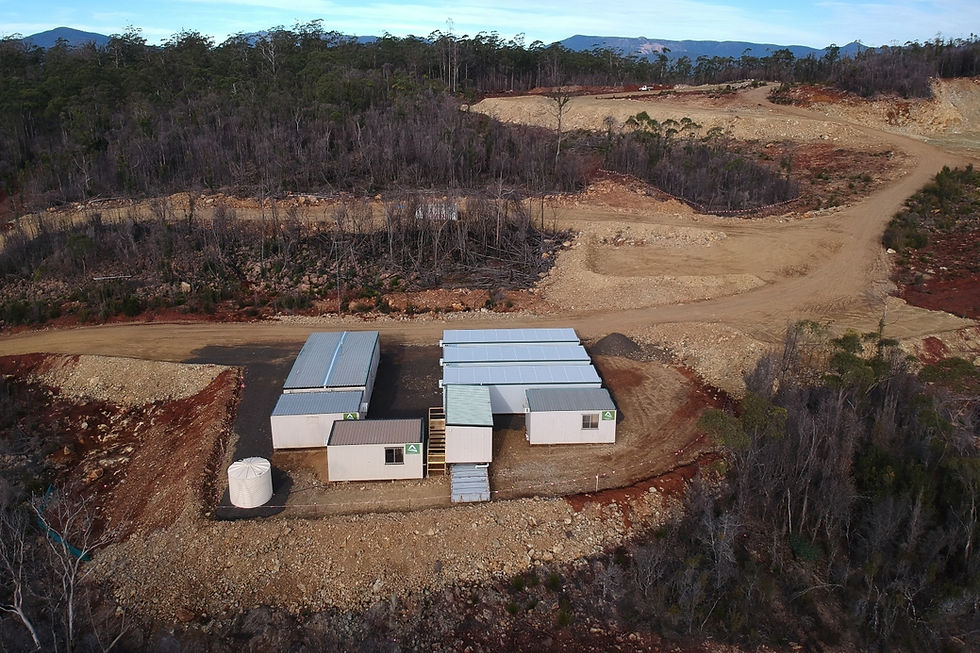Venture Minerals gets expert advice on Tasmanian iron ore mine
- Michael Philipps

- Jan 31, 2024
- 3 min read
Updated: Mar 24, 2024

Venture Minerals has engaged resources-focused advisory company Argonaut PCF to undertake a strategic review of the Riley iron ore mine in Tasmania following increased interest due to high iron ore prices.
The company believes it is in a position to consider its options after its previous offtake agreement with Prosperity Stell lapsed last year and the iron ore price rose to more than $220 per tonne in December.
Management describes Argonaut as a specialist natural resources advisor with leading expertise and a proven track record of assisting metals and mining companies critically assess and optimise the value of assets. The Argonaut-led review will include an initial assessment of the project including a potential restart, joint venture (JV) or an asset sale, focussing on delivering near-term value for the company and its shareholders.
The Riley deposit holds 1.6 million tonnes going 57 per cent iron from surface. It is in north-west Tasmania, just 10km from Venture’s Mount Lindsay tin-tungsten deposit that contains more than 80,000 tonnes of tin.
Production at Riley – which has been on care and maintenance since September 2021 – was scheduled at 800,000 tonnes per annum for two years, with a low-impurity haematite product grading 57 per cent iron. At the time of its closure, the price of iron ore was in free-fall plunging to US$80 per tonne (AU$118).
It kicked off production with a shipment of 45,632 tonnes of iron ore with an average grade of 57.3 per cent iron before deteriorating market conditions lead to the suspension of operations. However, management says with increased interest in recent months and while the iron ore price remains strong, the company will consider the full range of pathways to unlock the commercial value of the project for its shareholders.
Last year, Venture unveiled hopes of supplying boron to global markets after identifying large-scale borate-hosted tin and boron zones throughout its nearby Mount Lindsay project in northern Tasmania. A total of 102 historic diamond drill intersections were tabled from the Livingstone, Waterhouse, Reward and Big Wilson tin-tungsten-magnetite skarns to identify tin-boron zones not previously assessed in any mining studies at Mount Lindsay.
Management believes the discovery could enhance its project economics.
Boron is a critical mineral in the solar panel industry and up to 50kg of it is used in each new electric vehicle. The borate minerals identified by Venture occur within the current Mount Lindsay resource base and more extensively in skarns surrounding the company’s current tin-tungsten deposits.
The best results from drill intersections at the main Mount Lindsay skarn include 142.28m at 1.06 per cent boron, 0.28 per cent tin, 22.8 per cent iron and 0.08 per cent tungsten trioxide from 138m downhole. Other notable results include 101.22m at 0.67 per cent boron, 0.2 per cent tin, 21.5 per cent iron and 0.01 per cent tungsten trioxide from 36m.
Just this month, Venture wrapped up resource drilling at its Jupiter prospect, part of its Brothers rare earths project about 80km south-west of Mount Magnet in WA’s Mid West region. The project previously threw up impressive assays including 32m at 1629 parts per million total rare earth oxides (TREO) from 22m including 16m at 2397ppm TREO and a further 2m at an eyebrow-raising 7367ppm TREO from 36m.
The project sits about 250km from Iluka Resources’ Eneabba rare earths refinery that is slated to begin production in 2025 and about 520km from Lynas Rare Earths’ concentrator facility operating at Mount Weld.
With several commodities across multiple projects, the market will be keeping a close eye on which direction Venture is advised to take as it looks to develop its diverse portfolio.
Is your ASX-listed company doing something interesting? Contact: office@bullsnbears.com.au


